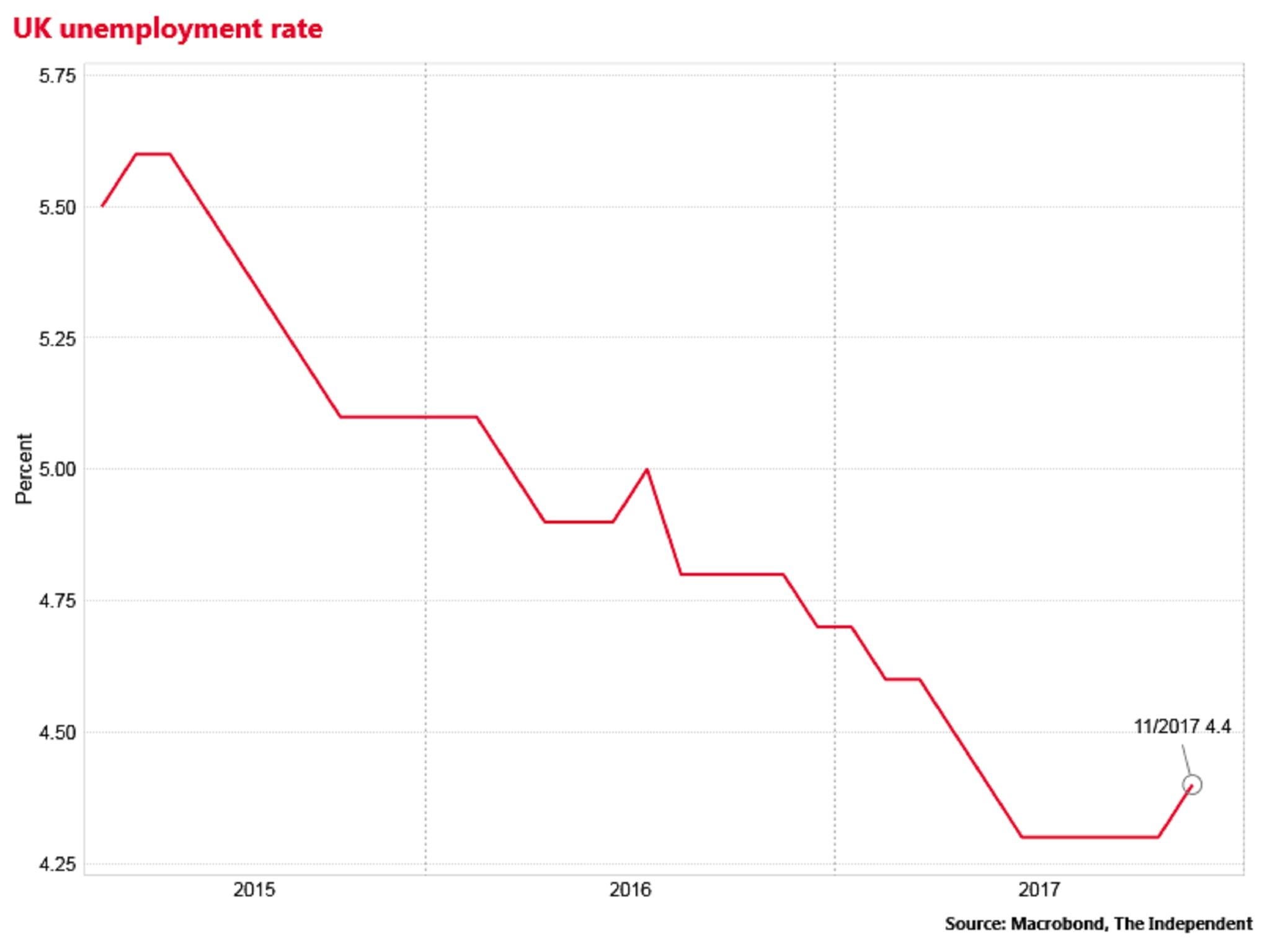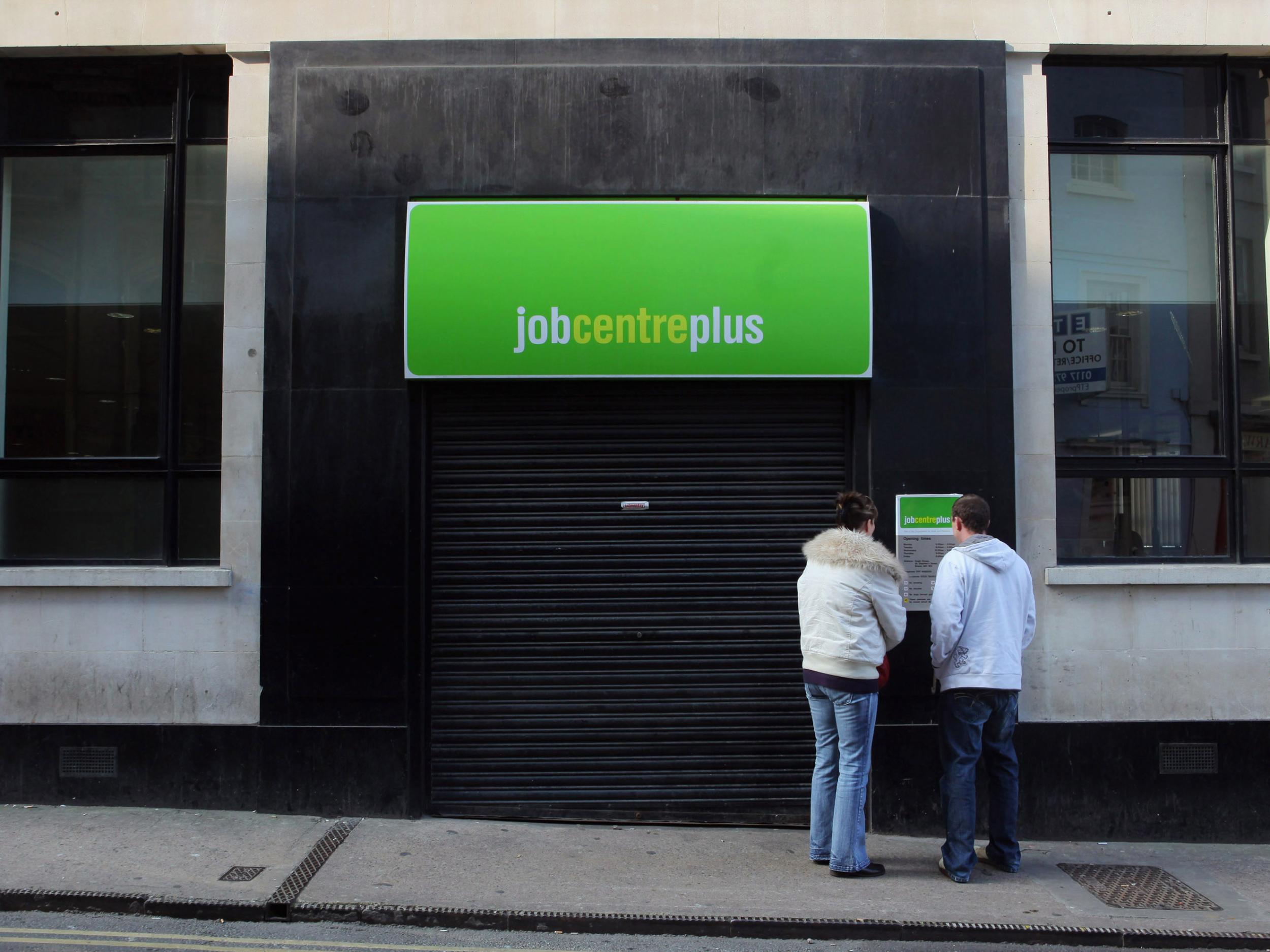The UK unemployment rate rose unexpectedly in the three months to December, registering the first increase in almost two years.
The jobless rate ticked up to 4.4 per cent, up from a 42-year low of 4.3 per cent previously, according to the Office for National Statistics.
City of London analysts had expected no change in the rate.
The numbers of people classed as out of work rose from 1.425 million to 1.47 million, an increase of 46,000 on the quarter, the biggest rise since early 2013.
The Bank of England revised down its estimate for the long-term equilibrium unemployment rate for the UK to 4.25 per cent earlier this month, implying that some deflationary slack may now have opened up in the labour market.
However, the ONS noted that the numbers of people in work continued to rise over the quarter, increasing by 88,000, and that there was a 109,000 fall in the number of people classed as economically inactive, which helped lift the jobless rate.
The total 16-plus UK employment rate rose again to 75.2 per cent, still close to a record high.
“The rise in unemployment looks like a blip, although it will still instil some caution on the [Bank’s Monetary Policy Committee],” said Samuel Tombs of Pantheon.
Sterling fell to its lowest level in a week in the wake of the data, at $1.3938.

Average wages were up by 2.5 per cent year-on-year over the three months, unchanged from the previous rate of growth, and below the inflation rate, meaning real wages are still falling.
Relatively tepid nominal wage increases also may discourage Bank of England rate setters from raising interest rates again in May, a date some analysts had pencilled in for the next rate hike after February’s Inflation Report.
Some analysts discerned signs of a pickup in the monthly wage figures, with average annual wages rising by 2.8 per cent in December, up from 2.3 per cent in November.
But others said there were still headwinds.
“While firms are reporting some upward pressure on pay settlements amid a very tight labour market, more subdued economic conditions together with high upfront business costs are likely to limit the extent to which wages are likely to rise,” said Suren Thiru of the British Chambers of Commerce.
The ONS estimated separately that UK productivity, measured by output per hour, grew by 0.8 per cent in the final quarter of 2017, following a 0.9 per cent increase in the first quarter. These were the strongest two quarters for productivity since the financial crisis a decade ago and will feed hopes that the UK’s productivity stagnation is finally ending.
The ONS also reported that the Government recorded a £10bn budget surplus in January, a little better than the £9.5bn surplus City analysts had pencilled in.
VAT receipts were up 1.4 per cent on the same month a year earlier.
January is traditionally the most significant month for income tax and capital gains receipts, as people file their self-assessment tax returns. Receipts hit £31.9bn in January, which was roughly the same as the same month in 2017.
Total borrowing for the 2017/18 financial year to date is £37.7bn, leaving the Government on course to considerably undershoot the £49.9bn full year deficit projected by the Office for Budget Responsibility in November 2017.

Join our commenting forum
Join thought-provoking conversations, follow other Independent readers and see their replies
Comments